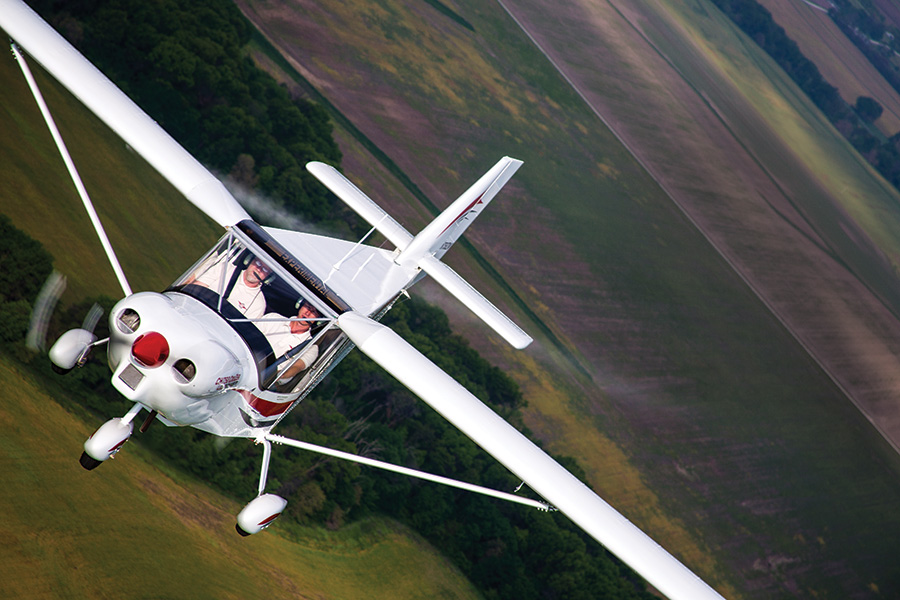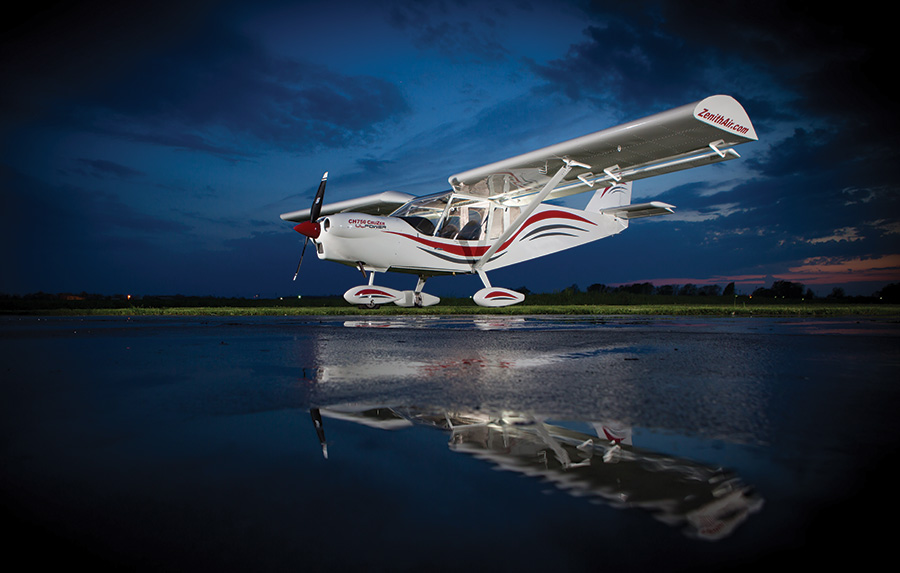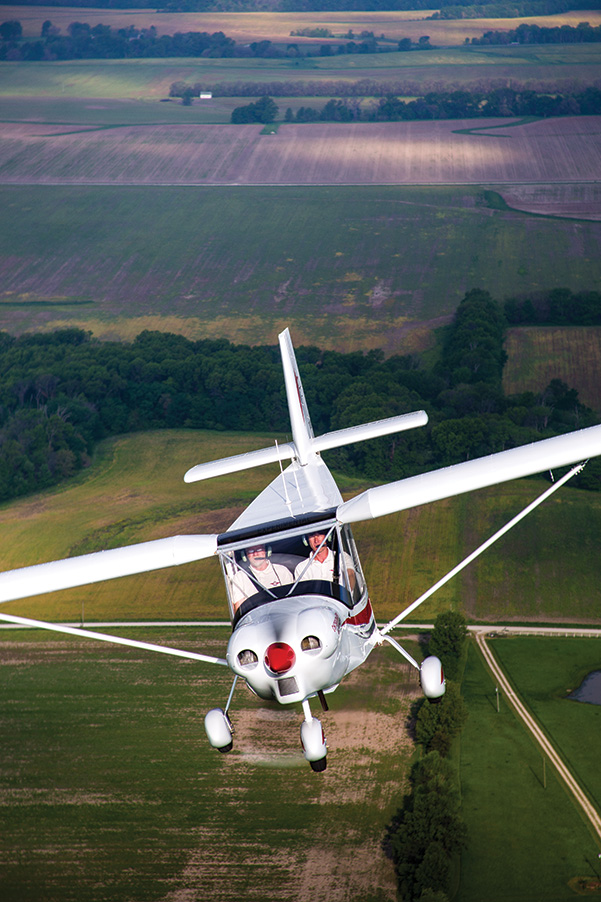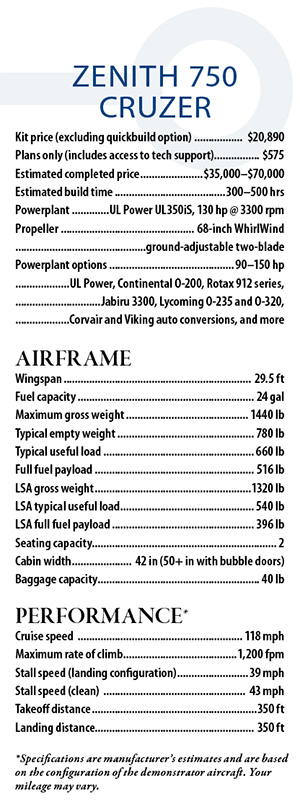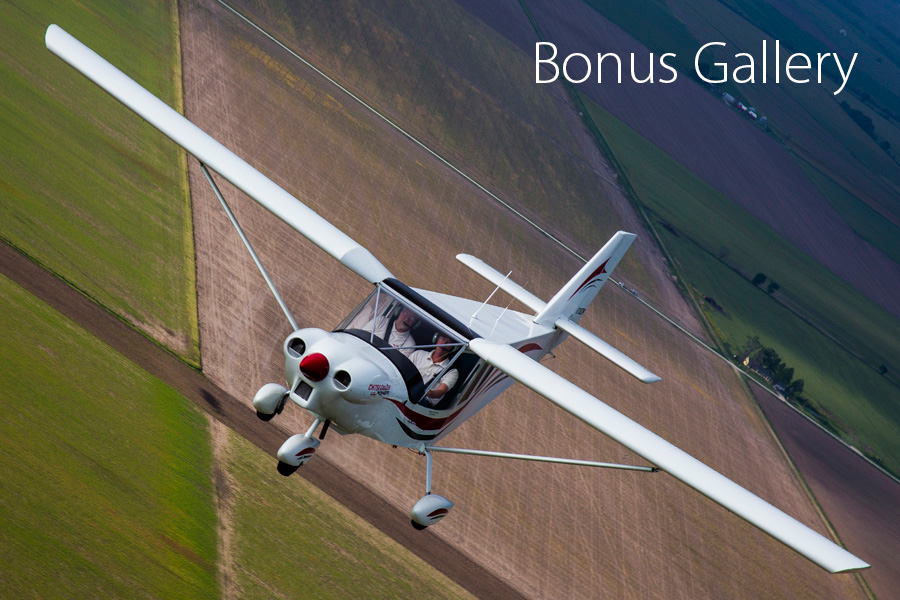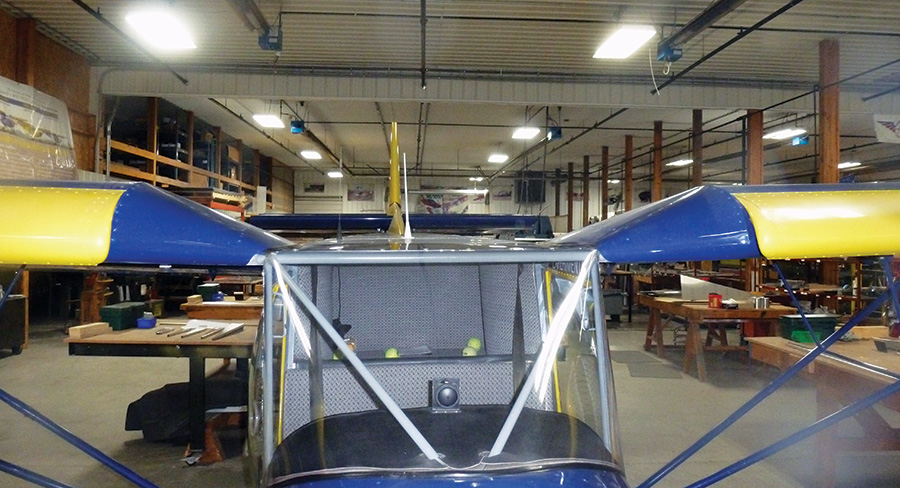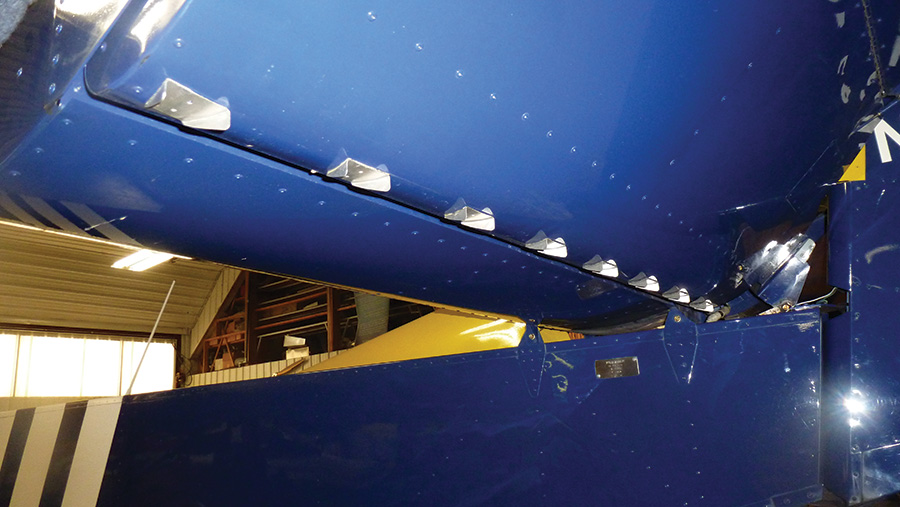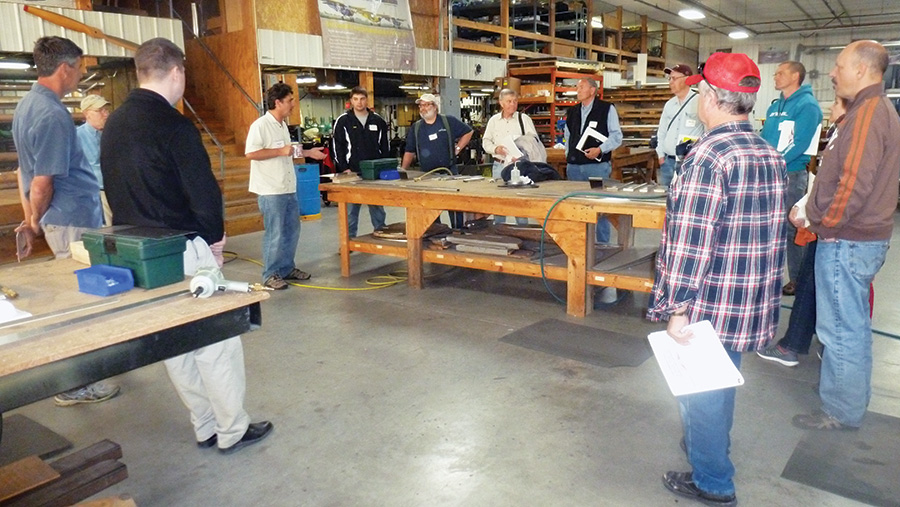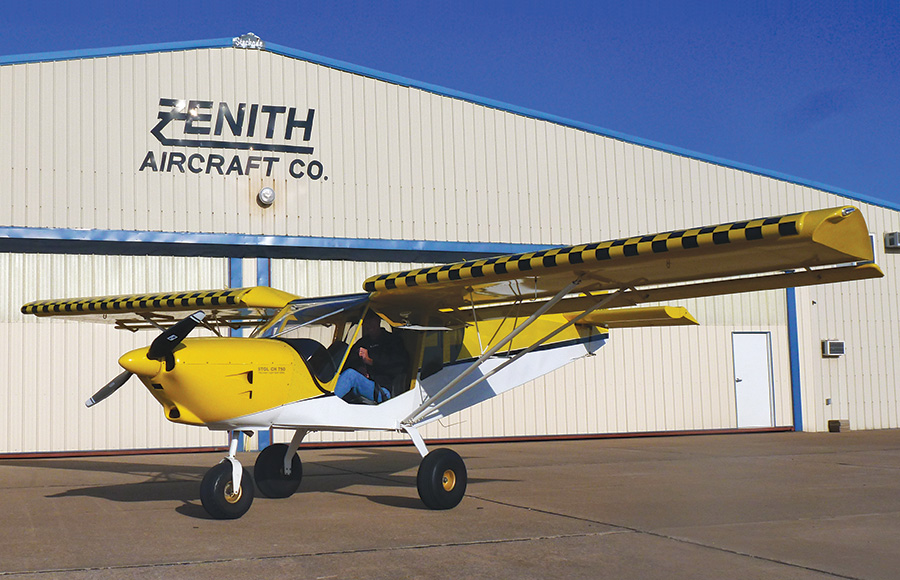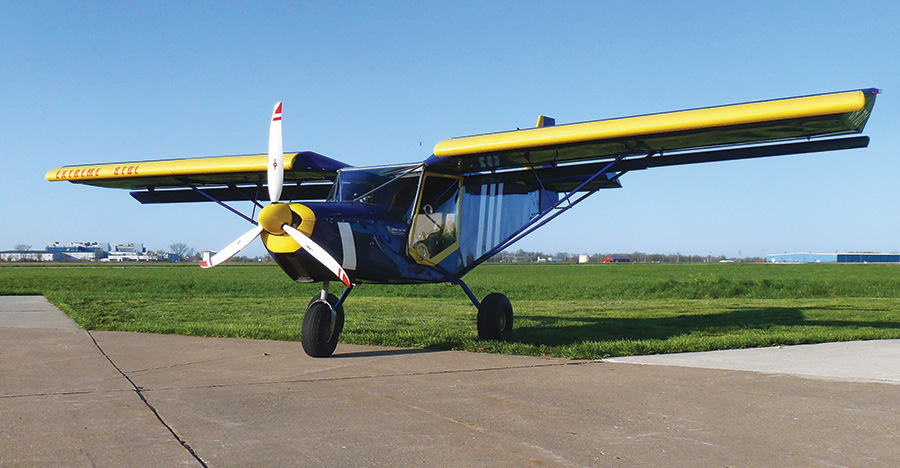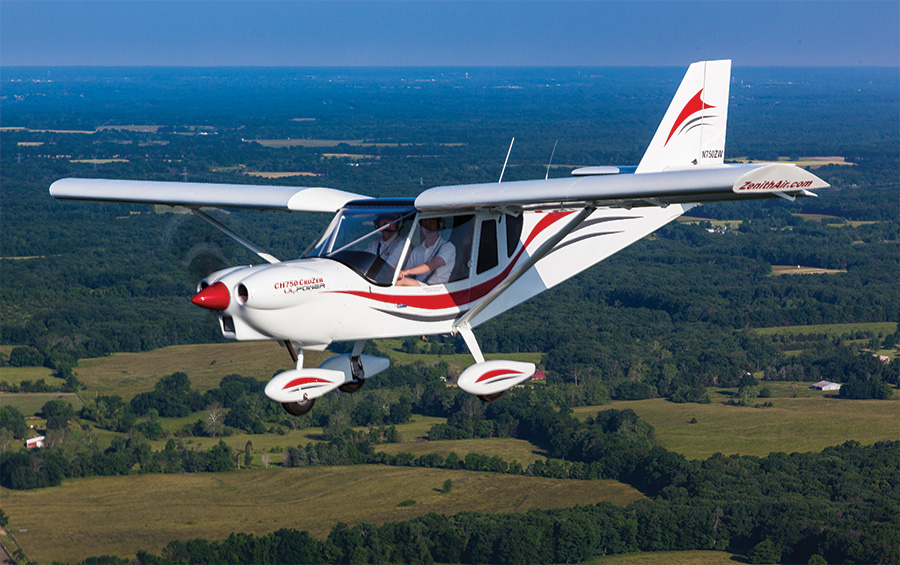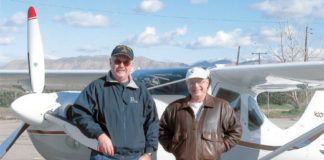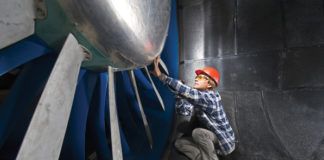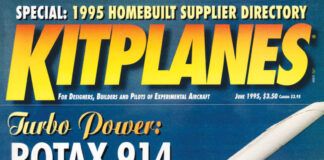From a distance, Zenith’s newest model, the 750 Cruzer, doesn’t appear radically different from their popular STOL model. The tall, slab-sided fuselage that almost defines the 750 line is still there, as is the stepped wingroot that allows good visibility with a thick airfoil. The familiar tricycle landing gear does sport wheel fairings—something that the STOL crowd might eschew when thinking about the rugged back-country strips for which the STOL airplane is designed—but to the uninitiated, walking past the Sun ‘n Fun or AirVenture display, one might wonder what is so new about the design.
Surprisingly, however, upon closer examination, new doesn’t begin to describe the latest offering from the design desk of Chris Heintz. One way to describe the Cruzer is a “de-STOLed” 750 STOL. Gone are the fixed slats and heavy-duty oversized wheels and tires. Gone is the vortex-generator-equipped elevator. Added are wheelpants and a clean, single-strut wing with no jury struts. The Cruzer, in fact, looks much more like an airplane you would see cavorting at a paved strip than one designed to go play in the dirt, and this observation would be correct.
Back to my Roots
Although I routinely fly fast, aerobatic airplanes these days, my heart has never left my roots in the world of the low and slow. Learning to fly in Cubs will do that to you —programming your brain to enjoy the view of the world from only a few hundred feet, taking off and landing from short little grassy areas, and generally thinking and feeling like a bird. A fast, bubble-canopied airplane concentrates your attention on the sky and the clouds. Low and slow high-wings give you a god-like perspective of the world below.
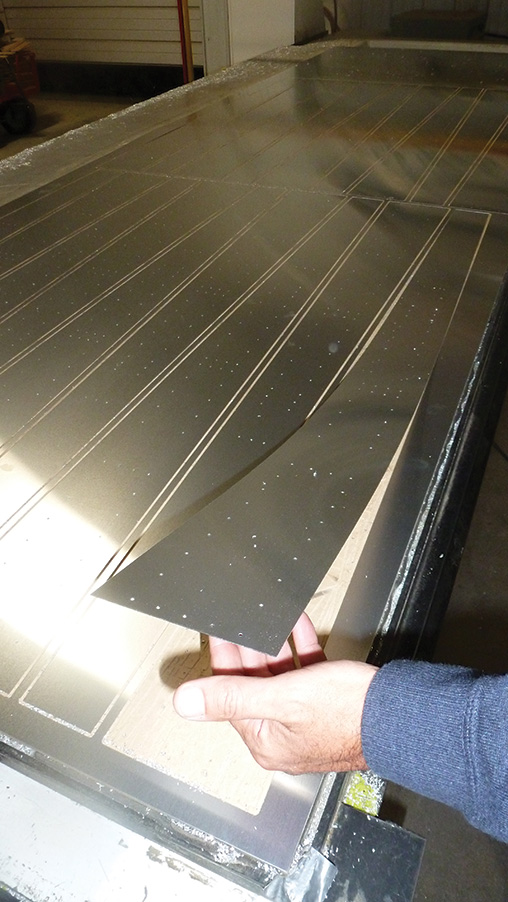
As with most of the high-volume kit makers these days, Zenith makes extensive use of computer-operated punches to produce parts that fit together and are ready to install.
With those thoughts in mind, I looked forward to my visit to Mexico, Missouri, home of Zenith Aircraft and their variety of kit planes. Zenith’s history goes back a few decades to designer Chris Heintz’s desire to take his experience with large airplane manufacturer de Havilland and apply those skills to light, easy-to-fly airplanes. Heintz broke into the business with several different kit-aircraft designs, and he entered the U.S. market with the Zenith CH 2000 in 1996. With 12 different aircraft to his credit, there are a variety of kit and plans options available to the homebuilt community for producing one of Heintz’s designs. Zenith Aircraft Company, run by Chris’ son Sebastien, is the highly successful current producer of kits for many of those models. Not only a producer of parts and kits, Zenith is active in builder seminars to get people started on their airplanes. The company is also an active member of AKIA, formed to promote and encourage experimental kit-building around the world.
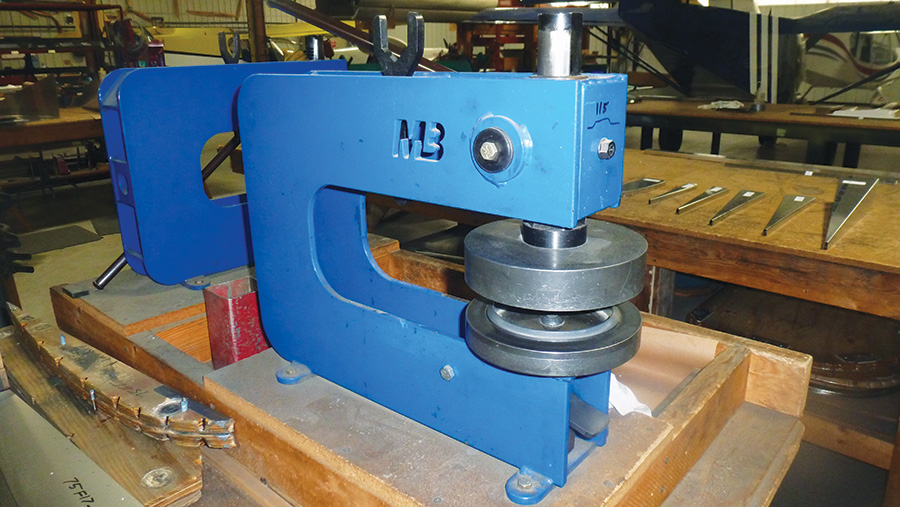
Any builder who has had to cut out lightening holes would appreciate this machine. It allows the factory to punch out wingribs quickly and precisely.
Because of their variety, Chris Heintz designs can be difficult to categorize. Zenith and Zenair aircraft are both high-wing and low-wing, fast and slow, bush and runway airplanes. No matter what you like and/or need to fly, Zenith has something to consider. Their web site divides the airplanes into high-wing, low-wing, and specialty choices, but most will choose from the high- or low-wing categories. While the low-wing series has a lot to offer, this report is going to follow the evolution of the high-wing airplanes—specifically the latest of the line, the Zenith 750 Cruzer. Designed for those who want the simple and rugged construction of the company’s 750 STOL, but don’t need to shoehorn themselves in and out of tiny airstrips, the Cruzer is intended for improved airport operations and going places just a little faster.
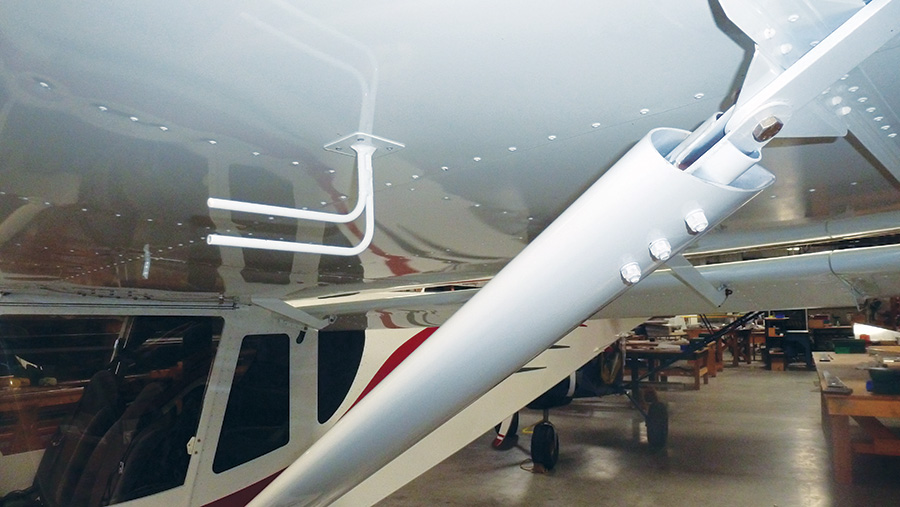
The new Cruzer wing differs greatly from its STOL sibling when it comes to wing structure. The Cruzer uses a single lift strut instead of a dual strut/jury strut design. The cleaner configuration contributes to the Cruzer’s higher speed.
One of the hallmarks of Zenith’s kit-building philosophy is choice; in addition to a wide selection of airframe designs, Heintz is happy to give people the opportunity to use any powerplant they wish. Zenith supports installations for Rotax, Jabiru and UL Power, as well as conventional aircraft engines and other alternatives. The factory fleet of high-wing airplanes now sports one of each of the aforementioned alternative engines, and I was given the chance to fly behind each of them as I sampled the different designs that lead to the Cruzer.
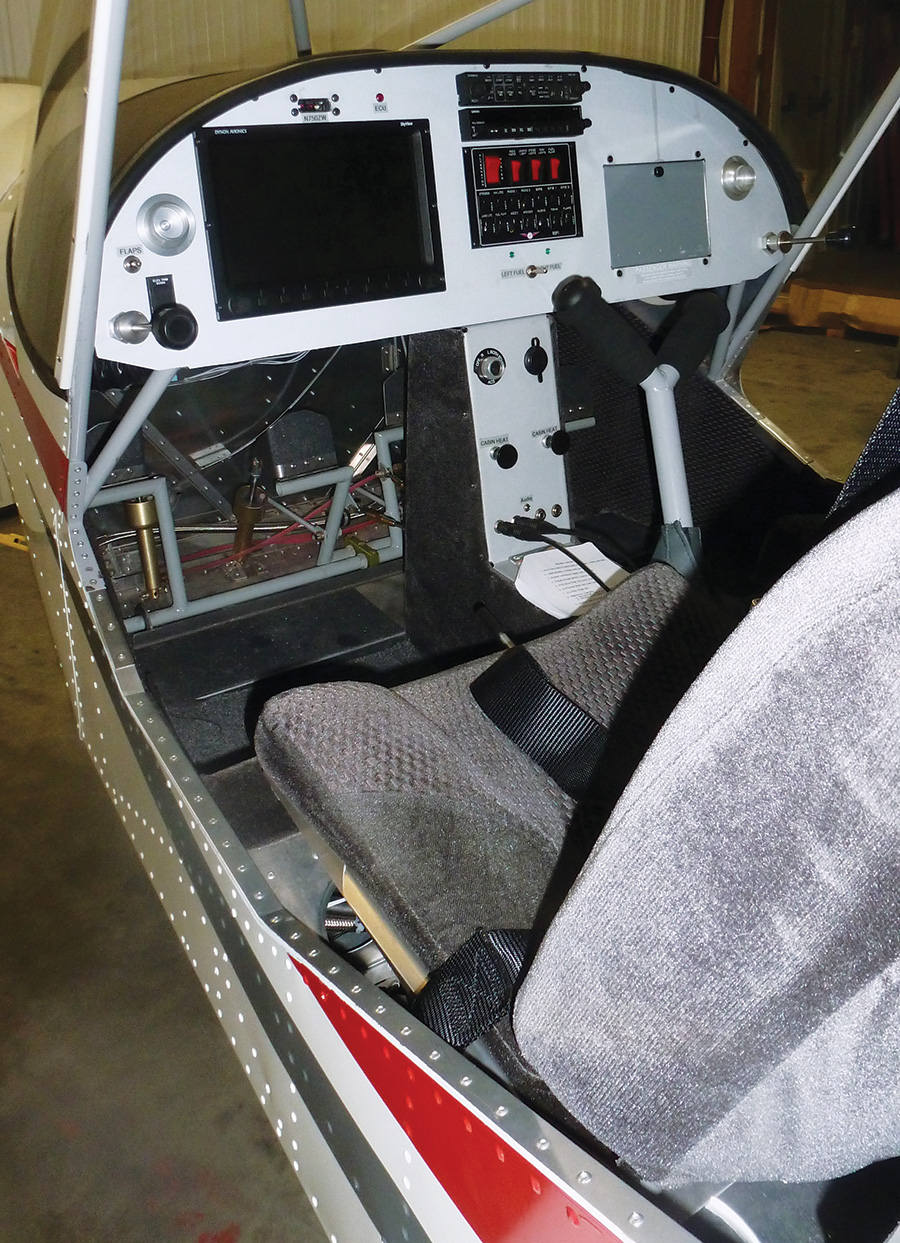
The plush seats of the Cruzer allow a higher, more comfortable seating position and give the airplane a more civilized look and feel. This isn’t a backwoods airplane!
What’s the difference?
We began the morning with a few warm-ups, flying the original 701, the 750 STOL, and the low-wing 650, just for good measure (See Sidebar “Flying the Lineup”). This gave me a chance to experience the wide variety of flight characteristics of the Zenith lineup, and gave me a basis of comparison with the new Cruzer. It was a pleasant morning over the Midwestern farmland, and a good chance to gain experience with the unique “Y”-shaped center stick before evaluating the latest design.
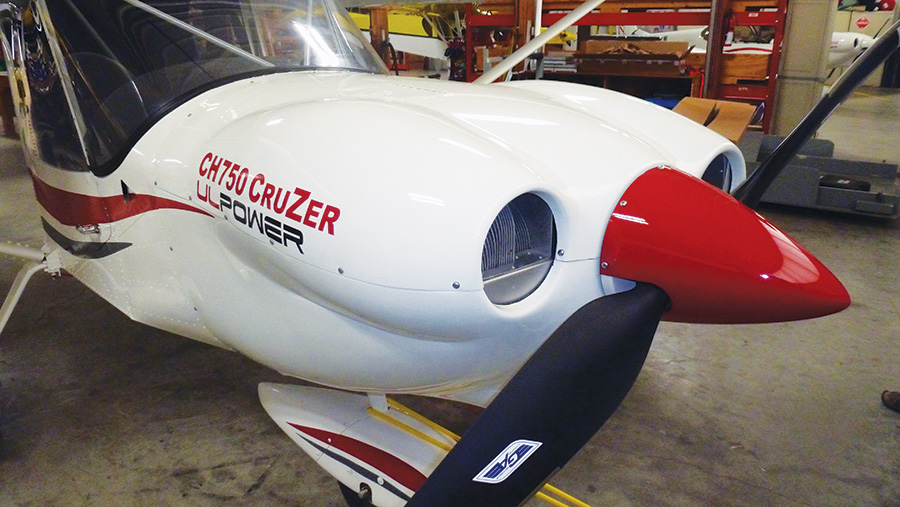
The design of the cowl for the UL Power engine gives an insect-like look to the prototype Cruzer. Different engine choices will use different cowls, so this look is not specific to the airframe, but to the engine choice.
With the preliminaries out of the way, and a feeling for the company’s products fresh in my mind, it was time to take out the newest of the airplanes in the line—the 750 Cruzer. The Cruzer is an answer to a question that I hadn’t thought to ask: What do you do if you like the high-wing
Zeniths, but operate mostly off of paved runways? What if you don’t go to Alaska or the mountains several times a year and you just want a nice-cruising homebuilt for lunch runs and knocking around the local area? Zenith answered these questions and more by building on what they had.
The Cruzer, at first glance, looks a lot like the STOL because the fuselages are almost identical. The cabin is comfortable with a large baggage area, and the panel has room for a nice VFR package. The center stick, with its funny dual handgrips, is still there. The major difference in the fuselage department is a change to shorter gear legs (making it easier to get in and out) and smaller tires (5.00×5) with tapered wheelpants. These common-sized tires are used on many homebuilts these days and are perfectly adequate for pavement and nice turf fields. The instrument panel in the demonstrator is slightly larger than the one in the STOL airplane, eliminating the slivers of view that the STOL pilot has ahead of the doorposts. However, the factory says there is no reason you can’t fit the STOL panel into the Cruzer if you so desire. After all, the fuselages are essentially the same. The prototype Cruzer is currently flying with flat-panel Plexiglas doors, but Heintz said they are temporary, until they can get a set of bubble doors (as in the STOL version) installed. These not only provide a nicer view, they add significantly to shoulder room and make flying more comfortable.
Because Zenith supports a number of different engines, the prototype Cruzer looks a little more unusual to the casual observer than it really is. The UL Power engine has a cowl that can best be described as insect-like. It has brow bumps that look just a little bit wicked, like you aren’t sure if this thing is going to bite or sting. In truth, it does neither; it just runs and cools well. Zenith has worked hard to provide firewall-forward kits that work, and this one is no exception.
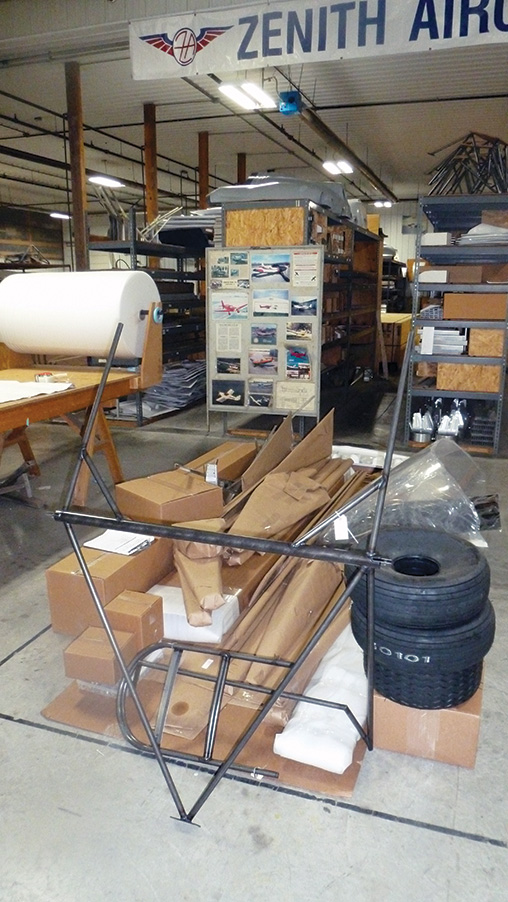
A Zenith kit, complete and ready to be loaded into the customer’s trailer. A well-stocked supply line allows Zenith to ship kits quickly and accurately.
The most apparent change in the flying surfaces is visible when you look at the wing—look Ma, no slats! With the same thick airfoil resulting in the unique gull-wing appearance at the fuselage/wing joint, it might make you think that you could make a Cruzer by removing the slats from a STOL airframe—but this is most definitely not the case. Along with a different airfoil, the structure is a clean-sheet design. Where the STOL version has dual lift and jury struts, the Cruzer has but a single aerodynamically-faired lift strut on each side. The internal wing structure is designed to accommodate this, and I was told that it has a different configuration and more ribs.
The empennage is different as well. The fin is new, with the same rudder, and the horizontal tail is completely new. The high-lift design of the STOL craft has been replaced with a more conventional, thinner-section tail plane that is more than adequate for normal operations. I noted differences in the tail attach points and intersection fairings as well; this seems to be a little more civilized airplane than the STOL airplane that looks like it is ready for the rugged bush.
Out for a Cruise
Getting into the Cruzer is a little easier than it is on the STOL version because of the shorter landing gear, although neither is difficult. The seats in the Cruzer are plush and thick, giving a comfortable ride and a high seating position that works well for visibility. Since I was coming straight out of the STOL, the wider instrument panel and cowling (for the UL Power engine) were immediately noticeable, but in retrospect, not at all objectionable when compared with most high-wing GA airplanes. I missed the bubble doors of the STOL, but since they are in the works, that is nothing to complain about either.
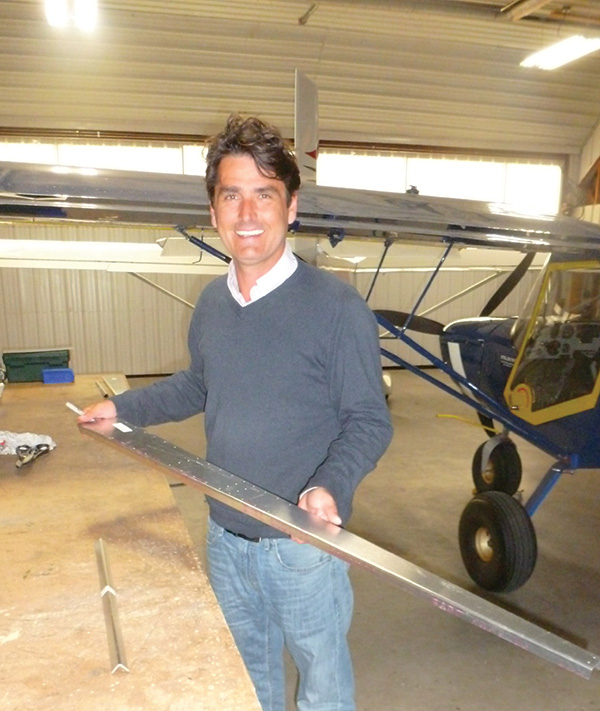
Zenith President Sebastien Heintz is an enthusiastic supporter of all things aviation. He believes that people should be free to build their aircraft with whatever engine and equipment works best for them. As a result, Zenith supports a wide variety of builder options.
Getting the UL Power engine started was about as easy as it can get: Turn the key and it starts like a car. The Dynon SkyView quickly showed everything I needed to know about the engine’s health, and we taxied to the active runway. The rugged nosewheel structure on both airplanes is full castering, and control with the brakes was easy; maneuverability was excellent. Company test and demo pilot Roger Dubbert briefed me on the differences to expect, particularly that it would take longer to get off the ground. He almost apologetically said it would be about 300 feet. If you think about that, it really points out how quickly the STOL version gets into the air. Most people would be ecstatic over a 300-foot takeoff roll, but not those used to STOL performance.
We took off with the flaps up, just to keep the post-takeoff tasks as simple as possible, and the Cruzer did not disappoint. We were off the ground as soon as we passed the top of the numbers on the pavement, and the airplane climbed away normally. The climb rate was good —not the spectacular elevator ride of the STOL, but better than most GA types. The airplane felt smooth and solid, reacting to the few bumps building up in the mid-morning Missouri air.
Out in the practice area, we climbed for a couple of thousand feet, then put the plane through its paces. Control harmony was good, handling was smooth, and slow flight was easy. This appears to be a very honest airplane in all ways. Accelerating in level flight, it was clear that Zenith had achieved its goal of a cruising airplane, with 120 mph showing on the ASI. While these numbers won’t impress the truly fast crowd, the airplane is probably 20 mph faster than its STOL cousins, and for those who want to fly for lunch off prepared runways, it could be a winner.

While the Cruzer shares a fuselage with its STOL brethren, it varies in many details and has its own wing and tail. Either design can use a variety of engines that will determine the cowl shape.
By now, after three different Zeniths in one morning, I was getting to feel comfortable with the center stick position, and I liked being able to fly from the left seat with a left-hand throttle. One of the advantages of the UL Power engine on the Cruzer was the lack of a throttle spring; I didn’t have to hold the throttle at idle to prevent it spooling up as I did with both the Rotax and the Jabiru. Little things like this can have a significant effect on a pilot’s comfort with an airplane, and in general, this made flying the Cruzer more relaxing.
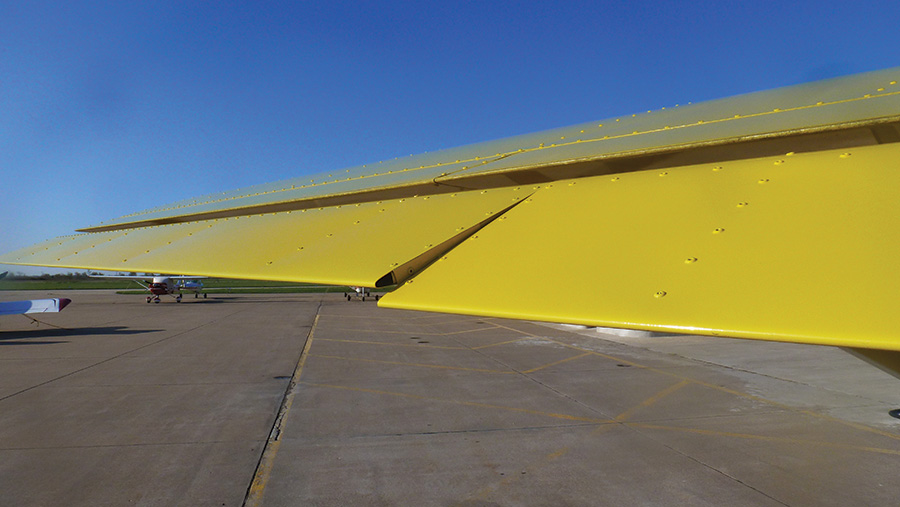
Instead of twisting the wing to make sure the root stalls first, a simple design element bolts the inboard and outboard sections of the flaperon together at different angles of incidence. This is a simple and accurate way of rigging the airplane.
Returning to Mexico for a couple of touch and goes, I was impressed at how comfortable I was getting in the high-wing Zenith airplanes after just an hour or two of exposure. They are easy to fly in a tight pattern, and picking the right landing profile was natural. I tried three different approach angles in the Cruzer, and found all three to be easy and simple to fly; they all ended with a nice little flair to a reasonably nose-high touchdown. Although not as slow as the STOL at touchdown, it still seemed like we simply walked to a stop and trotted off the runway at the nearest exit. The Cruzer is still a Zenith at heart, and that wing is there to provide plenty of lift at slow speeds.
In the final analysis, I came to think of the Cruzer as a Cessna 150—and I mean that in a good way! It is dependable and honest, flies about 120 mph, operates easily and smoothly off of paved and prepared runways, and will teach pilots good flying habits. There is plenty of cockpit space, and the baggage area is cavernous. Although I didn’t work any weight and balance problems, I expect it will hold more than it can carry. Best of all, the kit is designed to be easy to build and maintain; there are no compound curves, little fiberglass work to do (wing and tail tips are simple, small and plastic), and it uses pulled instead of driven rivets. Cleco, drill, deburr, and pull—no dimpling and driving solid rivets required. A builder can easily tailor the instrument panel to their needs, and firewall-forward packages for different engines are available from Zenith.
The Cruzer might be considered a bit odd to those who expect a company to always provide more of what their specialized aircraft are for. In the case of Zenith, that would be more and better STOL performance. But the Cruzer is a turn in a different direction that will satisfy those who simply don’t need to use the ultimate STOL performance of the line. And according to Sebastien Heintz, the development of the Cruzer will allow them to make the STOL version even better in the short takeoff and landing department. They intend to sell the Cruzer to the sport flier who lives with a good runway, and make the STOL version fly even slower for those who feel the need to land on a postage stamp and take off from a postcard. The Cruzer is a branch on the evolutionary tree that will make the entire line better, making the Zenith company a good place to look at for your next airplane.

